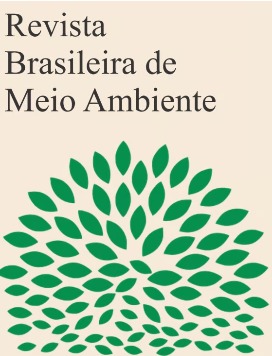November 16, 2022
About Graphical Abstracts
WHAT ARE GRAPHICAL ABSTRACTSJournals are increasingly requesting the submission of a "graphical abstract" or "visual abstract" alongside the article body. The Graphical Abstract, also known as a Visual Abstract, is a concise, unique, pictorial, and visual summary of the main findings of the article. It can serve as the final/initial figure of the article or, ideally, as a specially designed figure that captures the article's content at a glance. This visual representation can also appear in contexts beyond the article itself.
The graphical abstract may be displayed in online search result lists, online content lists, and the article's space on the Revista Brasileira de Meio Ambiente platform. Due to size, visual proportionality, and appropriate placement, the graphical abstract might not appear in the PDF file. The decision lies with the editorial team during the layout process, ensuring the best presentation for overall document clarity and understanding. However, the graphical abstract may also be used for other purposes, such as disseminating the research more broadly.
BENEFITS FOR AUTHORS WHO CREATE GRAPHICAL ABSTRACTSA graphical abstract should allow readers to quickly grasp the article's message. It aims to encourage exploration, promote interdisciplinary knowledge, and help readers identify the articles most relevant to their research interests.
The study by West, Lindsay, and Hart (2020), published in the Journal of Plastic, Reconstructive & Aesthetic Surgery under the title "Promoting your research using infographics and visual abstracts", showed that articles with graphical abstracts are advantageous in terms of both article views and increased social media activity. Specifically, the average annual usage of an article doubles when compared to those without a visual abstract.
For the journal, graphical abstracts offer an additional element for publication that extends beyond the platform itself. They help reach a broader audience, including those interested but less familiar with academic processes. Thus, the journal's social media presence and graphical abstracts become valuable allies in disseminating academic research.
HOW TO CREATE A GRAPHICAL ABSTRACT – BASIC INSTRUCTIONS[BASIC INFORMATION]: Authors must provide an original image that clearly represents the work described in the article. Graphical abstracts should be submitted alongside the Cover Letter or as a Separate Image under supplementary documents. Note that, just as every article must be unique, every graphical abstract must also be unique.
To enhance readability, the graphical abstract should have a clear beginning and end, preferably "reading" from top to bottom or left to right. Minimize distracting or cluttered elements as much as possible.
[IMAGE SIZE]: Provide an image with a base ratio of 800 pixels wide x 500 pixels high and a minimum resolution of 300 dpi. Authors may create larger graphical abstracts; however, the image will be proportionally resized to fit within the Revista Brasileira de Meio Ambiente's display window (800 by 500 pixels). Therefore, avoid using text that is too small, as it may interfere with readability when resized.
[FONT STYLE]: Use Times, Arial, Courier, or Symbol with a sufficiently large font size, considering the possibility of image resizing.
[FILE TYPE]: Preferred file types are TIFF, EPS, PDF, or MS Office files.
[ADDITIONAL INFORMATION]: Avoid including additional text, outlines, or synopses outside the image itself. Any text or labels should be part of the image file. Refrain from using unnecessary blank spaces or titles like “Graphical Abstract” within the file. Use the image to convey information, avoiding redundant or repetitive data.
Below is a basic template for creating a graphical/visual abstract. Additional resources for graphical abstracts and inspiration from relevant journal examples are also provided.

FREE TOOLS FOR CREATING GRAPHICAL ABSTRACTS:
- Simplified Science Publishing
- Canva
- Venngage
- Piktochart
- PowerPoint
- Creately
- Infogram
- Lucidchart
- MindTheGraph
- BioRender
- Tidbit
-
Example 1 – Lancet
(Mass drug administration of ivermectin and dihydroartemisinin-piperaquine against malaria in settings with high coverage of standard control interventions: a cluster-randomised controlled trial in The Gambia) -
Example 2 – Lancet
(Safety, tolerability, and immunogenicity of an aerosolised adenovirus type-5 vector-based COVID-19 vaccine (Ad5-nCoV) in adults: preliminary report of an open-label and randomised phase 1 clinical trial) -
Example 3 – AJKD
(Incidence of ESKD Among Native Hawaiians and Pacific Islanders Living in the 50 US States and Pacific Island Territories) -
Example 4 – JCE
(A meta-research study revealed several challenges in obtaining placebos for investigator-initiated drug trials) -
Example 5 – Kidney Medicine
(Sleep Apnea in Maintenance Hemodialysis: A Mixed-Methods Study) -
Example 6 – PRAS
(West, Lindsay, and Hart, 2020, "Promoting your research using infographics and visual abstracts")
Adapted and Modified from Elsevier - Graphical Abstracts
(https://www.elsevier.com/authors/tools-and-resources/visual-abstract)
